Interacting Body Systems Activities for Middle School Science
These middle school science units provide engaging, student-led learning experiences through editable presentations, worksheets, choice projects, and assessments. Each unit follows the 5E Model—Engagement, Exploration, Explanation, Elaboration, and Evaluation—allowing students to explore the circulatory, digestive, excretory, muscular, nervous, and respiratory systems through hands-on station labs, reading passages, research activities, videos, and experiments. The resources below will give students a comprehensive understanding of body systems. All of the following materials are also included in the Kesler Science Membership.
This middle school circulatory system unit offers editable presentations, worksheets, choice projects, and assessments designed for student-led, differentiated learning. The unit follows the 5E Model—Engagement, Exploration, Explanation, Elaboration, and Evaluation—providing flexibility for classroom or virtual learning. It aligns with NGSS standards, with bilingual materials available in English and Spanish.
Students explore the circulatory system through nine station labs that offer multimodal, hands-on activities. These stations include "Explore It!" (demo or experiment), "Read It!" (comprehension passage), "Research It!" (online tasks), and "Watch It!" (video and discussion). Output stations allow students to organize, write, illustrate, and assess their learning. The "Challenge It!" station provides extra enrichment for advanced learners.
Editable PowerPoints and interactive notebooks offer varied formats for lesson delivery. Students extend learning through choice projects, and assessment materials are tailored for STAAR 2.0 test practice. This comprehensive unit requires minimal prep and supports both in-class and virtual learning environments.
This middle school circulatory system unit offers editable presentations, worksheets, choice projects, and assessments designed for student-led, differentiated learning. The unit follows the 5E Model—Engagement, Exploration, Explanation, Elaboration, and Evaluation—providing flexibility for classroom or virtual learning. It aligns with NGSS standards, with bilingual materials available in English and Spanish.
Students explore the circulatory system through nine station labs that offer multimodal, hands-on activities. These stations include "Explore It!" (demo or experiment), "Read It!" (comprehension passage), "Research It!" (online tasks), and "Watch It!" (video and discussion). Output stations allow students to organize, write, illustrate, and assess their learning. The "Challenge It!" station provides extra enrichment for advanced learners.
Editable PowerPoints and interactive notebooks offer varied formats for lesson delivery. Students extend learning through choice projects, and assessment materials are tailored for STAAR 2.0 test practice. This comprehensive unit requires minimal prep and supports both in-class and virtual learning environments.
The Kesler Science Digestive System unit is a comprehensive, editable middle school lesson with presentations, worksheets, choice projects, and assessments. It follows the 5E Model, focusing on engagement, exploration, explanation, elaboration, and evaluation to facilitate student-led, differentiated learning. The unit includes multimodal activities such as station labs, where students engage with the material through reading, videos, hands-on demos, and research. Output stations allow students to show understanding through writing, categorizing, and drawing.
The lesson covers essential questions about the digestive system's structure and function, with differentiated materials and Spanish translations for accessibility. Editable PowerPoints and interactive notebooks, available in both digital and print formats, cater to different learning styles. The unit also includes student-choice projects for deeper exploration and assessments aligned with STAAR 2.0. Designed for both classroom and virtual settings, this unit requires minimal prep while offering maximum flexibility for teachers.
The Kesler Science Digestive System unit is a comprehensive, editable middle school lesson with presentations, worksheets, choice projects, and assessments. It follows the 5E Model, focusing on engagement, exploration, explanation, elaboration, and evaluation to facilitate student-led, differentiated learning. The unit includes multimodal activities such as station labs, where students engage with the material through reading, videos, hands-on demos, and research. Output stations allow students to show understanding through writing, categorizing, and drawing.
The lesson covers essential questions about the digestive system's structure and function, with differentiated materials and Spanish translations for accessibility. Editable PowerPoints and interactive notebooks, available in both digital and print formats, cater to different learning styles. The unit also includes student-choice projects for deeper exploration and assessments aligned with STAAR 2.0. Designed for both classroom and virtual settings, this unit requires minimal prep while offering maximum flexibility for teachers.
This middle school unit on the excretory system provides everything needed for engaging, student-led learning with minimal prep. It includes editable presentations, worksheets, choice projects, and assessments, offering flexibility for both in-person and virtual classrooms. Students will explore key questions such as the function and structure of the excretory system and the organs involved.
The lesson follows the 5E Model, including activities for engagement, exploration, explanation, elaboration, and evaluation. Students participate in differentiated, hands-on station labs, exploring concepts through reading, research, videos, and experiments. They also demonstrate understanding through card sorts, writing, illustrations, and assessments. Bonus activities extend learning for early finishers.
With editable PowerPoints, interactive notebooks in English and Spanish, and multimodal learning approaches, the lesson is designed to keep students engaged and support different learning styles. It also includes projects and assessments aligned to Texas TEKS standards and STAAR 2.0. This resource is fully adaptable for both classroom and virtual settings.
This middle school unit on the excretory system provides everything needed for engaging, student-led learning with minimal prep. It includes editable presentations, worksheets, choice projects, and assessments, offering flexibility for both in-person and virtual classrooms. Students will explore key questions such as the function and structure of the excretory system and the organs involved.
The lesson follows the 5E Model, including activities for engagement, exploration, explanation, elaboration, and evaluation. Students participate in differentiated, hands-on station labs, exploring concepts through reading, research, videos, and experiments. They also demonstrate understanding through card sorts, writing, illustrations, and assessments. Bonus activities extend learning for early finishers.
With editable PowerPoints, interactive notebooks in English and Spanish, and multimodal learning approaches, the lesson is designed to keep students engaged and support different learning styles. It also includes projects and assessments aligned to Texas TEKS standards and STAAR 2.0. This resource is fully adaptable for both classroom and virtual settings.
The Kesler Science Muscular System 5E Lesson is a comprehensive unit for middle school students, covering the structure and function of the muscular system. The lesson includes editable PowerPoints, worksheets, choice projects, and assessments, designed for differentiated, student-led learning. With minimal prep required, it’s flexible for both in-class and virtual use.
Students will explore essential questions about the muscular system's function and its associated organs. The lesson follows the 5E Model, with activities for engagement, exploration, explanation, elaboration, and evaluation. Students will engage through word wall cards, class discussions, and hands-on activities. The exploration includes differentiated station labs with multimodal activities such as reading passages, experiments, and videos. Students can demonstrate their learning through activities like sorting, writing, illustrating, and assessing.
The lesson offers editable PowerPoints, interactive notebooks in both English and Spanish, and customizable templates. Student-choice projects extend learning, and assessment questions are aligned with STAAR 2.0. This resource can be used in both traditional and virtual classrooms, making it highly adaptable for diverse learning environments.
The Kesler Science Muscular System 5E Lesson is a comprehensive unit for middle school students, covering the structure and function of the muscular system. The lesson includes editable PowerPoints, worksheets, choice projects, and assessments, designed for differentiated, student-led learning. With minimal prep required, it’s flexible for both in-class and virtual use.
Students will explore essential questions about the muscular system's function and its associated organs. The lesson follows the 5E Model, with activities for engagement, exploration, explanation, elaboration, and evaluation. Students will engage through word wall cards, class discussions, and hands-on activities. The exploration includes differentiated station labs with multimodal activities such as reading passages, experiments, and videos. Students can demonstrate their learning through activities like sorting, writing, illustrating, and assessing.
The lesson offers editable PowerPoints, interactive notebooks in both English and Spanish, and customizable templates. Student-choice projects extend learning, and assessment questions are aligned with STAAR 2.0. This resource can be used in both traditional and virtual classrooms, making it highly adaptable for diverse learning environments.
This middle school nervous system unit includes presentations, worksheets, choice projects, and assessments, all designed for student-led, differentiated learning with minimal prep required. The lesson is aligned with the 2017 Texas TEKS and features editable PowerPoints, Spanish translations, and a multimodal approach to engage students.
Students explore essential questions about the structure and function of the nervous system and its main organs. The lesson is built around the 5E Model: Engagement, Exploration, Explanation, Elaboration, and Evaluation. In the Exploration phase, students engage in differentiated, hands-on stations such as reading, watching videos, conducting experiments, and completing activities like card sorts, drawing, and open-ended writing.
The Explanation phase includes editable PowerPoints, interactive notebooks, and note-taking templates. In Elaboration, students complete choice projects to extend learning. Evaluation consists of assessment questions aligned with STAAR 2.0 and review materials for class discussions, homework, or test practice. The lesson can be adapted for virtual learning, making it versatile for different learning environments.
This middle school nervous system unit includes presentations, worksheets, choice projects, and assessments, all designed for student-led, differentiated learning with minimal prep required. The lesson is aligned with the 2017 Texas TEKS and features editable PowerPoints, Spanish translations, and a multimodal approach to engage students.
Students explore essential questions about the structure and function of the nervous system and its main organs. The lesson is built around the 5E Model: Engagement, Exploration, Explanation, Elaboration, and Evaluation. In the Exploration phase, students engage in differentiated, hands-on stations such as reading, watching videos, conducting experiments, and completing activities like card sorts, drawing, and open-ended writing.
The Explanation phase includes editable PowerPoints, interactive notebooks, and note-taking templates. In Elaboration, students complete choice projects to extend learning. Evaluation consists of assessment questions aligned with STAAR 2.0 and review materials for class discussions, homework, or test practice. The lesson can be adapted for virtual learning, making it versatile for different learning environments.
This middle school unit on the respiratory system includes editable PowerPoints, worksheets, choice projects, and assessments, designed for minimal prep and differentiated, student-led learning. The unit aligns with NGSS standards and covers the main function and organs of the respiratory system.
The lesson follows the 5E Model, including Engagement, Exploration, Explanation, Elaboration, and Evaluation phases. Students will engage with vocabulary and activities such as class discussions, hands-on demos, and a differentiated student-led station lab with nine stations, including reading passages, research, videos, and activities for categorization and illustration. A bonus station offers extension activities for early finishers.
The Explanation phase features editable PowerPoints, interactive notebook templates in English and Spanish, and note-taking guides. For Elaboration, students can extend their learning with choice projects on the respiratory system. The Evaluation phase includes updated assessment questions for STAAR 2.0 and review materials.
This resource is flexible for both in-person and virtual learning, providing multimodal materials that support all learning styles.
This middle school unit on the respiratory system includes editable PowerPoints, worksheets, choice projects, and assessments, designed for minimal prep and differentiated, student-led learning. The unit aligns with NGSS standards and covers the main function and organs of the respiratory system.
The lesson follows the 5E Model, including Engagement, Exploration, Explanation, Elaboration, and Evaluation phases. Students will engage with vocabulary and activities such as class discussions, hands-on demos, and a differentiated student-led station lab with nine stations, including reading passages, research, videos, and activities for categorization and illustration. A bonus station offers extension activities for early finishers.
The Explanation phase features editable PowerPoints, interactive notebook templates in English and Spanish, and note-taking guides. For Elaboration, students can extend their learning with choice projects on the respiratory system. The Evaluation phase includes updated assessment questions for STAAR 2.0 and review materials.
This resource is flexible for both in-person and virtual learning, providing multimodal materials that support all learning styles.
This student-led station lab on the circulatory system engages middle school students while allowing them to explore key concepts independently. With eight differentiated activities, students identify and compare veins and arteries, analyze blood flow, and deepen their understanding of the circulatory system. A ninth challenge station provides extension activities for early finishers.
The nine stations, which include signage, literature, resources, and task cards, can be completed independently or in small groups. Materials for the Explore It! station may require common lab items.
Stations include multimodal activities: Explore It! features a hands-on demonstration, Research It! allows students to explore a website, Read It! provides differentiated passages with questions, and Watch It! offers a video with a follow-up activity. Output stations include Organize It! (hands-on with manipulatives), Illustrate It! (sketching models), Write It! (short answer responses), and Assess It! (task cards with vocabulary and questions). The bonus Challenge It! station offers extra activities for advanced students.
This flexible resource can be used for both in-person and virtual learning.
This student-led station lab on the circulatory system engages middle school students while allowing them to explore key concepts independently. With eight differentiated activities, students identify and compare veins and arteries, analyze blood flow, and deepen their understanding of the circulatory system. A ninth challenge station provides extension activities for early finishers.
The nine stations, which include signage, literature, resources, and task cards, can be completed independently or in small groups. Materials for the Explore It! station may require common lab items.
Stations include multimodal activities: Explore It! features a hands-on demonstration, Research It! allows students to explore a website, Read It! provides differentiated passages with questions, and Watch It! offers a video with a follow-up activity. Output stations include Organize It! (hands-on with manipulatives), Illustrate It! (sketching models), Write It! (short answer responses), and Assess It! (task cards with vocabulary and questions). The bonus Challenge It! station offers extra activities for advanced students.
This flexible resource can be used for both in-person and virtual learning.
This student-led station lab on the digestive system engages middle school students by guiding them through interactive activities to explore the function of the digestive system and its organs. Designed to be both comprehensive and easy to implement, the lab provides a variety of learning experiences that allow students to take ownership of their learning. The teacher's role is to facilitate rather than direct, promoting student independence in understanding key concepts.
The lab consists of nine stations, each offering differentiated tasks that cater to various learning styles and levels. Students can engage with the material through hands-on demonstrations, reading passages, video analysis, and research activities. The stations also include tasks where students organize, illustrate, and write about what they have learned, reinforcing their understanding through multiple forms of output. A bonus challenge station is available for advanced students, offering extension activities to deepen their learning.
This station lab is adaptable for both in-person and virtual learning environments, with digital versions of the tasks available through platforms like PowerPoint and Google Slides. Whether in the classroom or online, this activity supports personalized, student-centered learning, making it a flexible and effective resource for teaching the digestive system.
This student-led station lab on the digestive system engages middle school students by guiding them through interactive activities to explore the function of the digestive system and its organs. Designed to be both comprehensive and easy to implement, the lab provides a variety of learning experiences that allow students to take ownership of their learning. The teacher's role is to facilitate rather than direct, promoting student independence in understanding key concepts.
The lab consists of nine stations, each offering differentiated tasks that cater to various learning styles and levels. Students can engage with the material through hands-on demonstrations, reading passages, video analysis, and research activities. The stations also include tasks where students organize, illustrate, and write about what they have learned, reinforcing their understanding through multiple forms of output. A bonus challenge station is available for advanced students, offering extension activities to deepen their learning.
This station lab is adaptable for both in-person and virtual learning environments, with digital versions of the tasks available through platforms like PowerPoint and Google Slides. Whether in the classroom or online, this activity supports personalized, student-centered learning, making it a flexible and effective resource for teaching the digestive system.
This student-led Excretory System Station Lab engages middle school students in an interactive exploration of the body’s excretory system. Designed to minimize prep time, the lesson allows students to take charge of their own learning while exploring the system's parts and functions. Through nine modular stations, students work both independently and in small groups, completing a variety of activities that support their understanding of the excretory system. The lab promotes a student-centered approach, where the teacher facilitates the learning process rather than directing it.
Each station presents students with different ways to encounter new concepts, including hands-on demonstrations, reading passages, research tasks, and videos. Students engage with the material in multimodal ways, ensuring a comprehensive learning experience that caters to different learning styles. The stations offer differentiated content, with passages and activities tailored to various reading levels and a bonus challenge station for early finishers, allowing for extension activities like crosswords and mini-projects. These stations provide ample opportunities for students to demonstrate their knowledge through tasks such as organizing information, illustrating models, and writing responses.
This Excretory System Station Lab is adaptable for both in-person and virtual learning environments. Whether students are using physical materials or digital tools like PowerPoint or Google Slides, the lab ensures a dynamic and engaging experience. By the end of the lesson, students will have gained a deeper understanding of the excretory system through active participation, critical thinking, and personalized learning activities that support both recall and retention.
This student-led Excretory System Station Lab engages middle school students in an interactive exploration of the body’s excretory system. Designed to minimize prep time, the lesson allows students to take charge of their own learning while exploring the system's parts and functions. Through nine modular stations, students work both independently and in small groups, completing a variety of activities that support their understanding of the excretory system. The lab promotes a student-centered approach, where the teacher facilitates the learning process rather than directing it.
Each station presents students with different ways to encounter new concepts, including hands-on demonstrations, reading passages, research tasks, and videos. Students engage with the material in multimodal ways, ensuring a comprehensive learning experience that caters to different learning styles. The stations offer differentiated content, with passages and activities tailored to various reading levels and a bonus challenge station for early finishers, allowing for extension activities like crosswords and mini-projects. These stations provide ample opportunities for students to demonstrate their knowledge through tasks such as organizing information, illustrating models, and writing responses.
This Excretory System Station Lab is adaptable for both in-person and virtual learning environments. Whether students are using physical materials or digital tools like PowerPoint or Google Slides, the lab ensures a dynamic and engaging experience. By the end of the lesson, students will have gained a deeper understanding of the excretory system through active participation, critical thinking, and personalized learning activities that support both recall and retention.
This modular, student-led station lab about the muscular system keeps middle school students engaged while helping them explore key concepts of the body system. The activity allows students to identify the primary functions of muscles and understand the properties of different muscle types through eight differentiated stations and a bonus challenge station.
The nine stations, which include hands-on demonstrations, research tasks, reading passages, and videos, provide multiple ways for students to learn and show their understanding. The activities are designed to be student-centered, with the teacher facilitating rather than leading the learning. In the digital version, students engage with interactive materials in PowerPoint or Google Slides.
Stations include tasks like exploring, reading, and watching materials, as well as organizing, illustrating, and writing responses. A challenge station is included for early finishers, offering extension activities like crosswords, games, and mini-projects. The resource can be used for both in-person and virtual learning, providing flexible options for various teaching environments.
This modular, student-led station lab about the muscular system keeps middle school students engaged while helping them explore key concepts of the body system. The activity allows students to identify the primary functions of muscles and understand the properties of different muscle types through eight differentiated stations and a bonus challenge station.
The nine stations, which include hands-on demonstrations, research tasks, reading passages, and videos, provide multiple ways for students to learn and show their understanding. The activities are designed to be student-centered, with the teacher facilitating rather than leading the learning. In the digital version, students engage with interactive materials in PowerPoint or Google Slides.
Stations include tasks like exploring, reading, and watching materials, as well as organizing, illustrating, and writing responses. A challenge station is included for early finishers, offering extension activities like crosswords, games, and mini-projects. The resource can be used for both in-person and virtual learning, providing flexible options for various teaching environments.
This student-led activity on the nervous system engages middle school students while providing a comprehensive, low-prep way for them to direct their learning. Students will explore key concepts like the structures of the nervous system, the differences between the cerebellum and cerebrum, and how information flows in the body.
The station lab includes eight differentiated activities, plus a ninth challenge station for early finishers. Students work independently or in small groups, completing hands-on tasks, reading passages, watching videos, and using digital resources. The stations include "Explore It!" for hands-on demonstrations, "Research It!" with website-based tasks, "Read It!" with differentiated reading passages, and "Watch It!" for video analysis.
Output stations provide opportunities for students to organize information, illustrate models, write responses, and assess their understanding. The bonus challenge station offers extension activities for advanced learners. This resource is adaptable for both in-person and virtual learning environments.
This student-led activity on the nervous system engages middle school students while providing a comprehensive, low-prep way for them to direct their learning. Students will explore key concepts like the structures of the nervous system, the differences between the cerebellum and cerebrum, and how information flows in the body.
The station lab includes eight differentiated activities, plus a ninth challenge station for early finishers. Students work independently or in small groups, completing hands-on tasks, reading passages, watching videos, and using digital resources. The stations include "Explore It!" for hands-on demonstrations, "Research It!" with website-based tasks, "Read It!" with differentiated reading passages, and "Watch It!" for video analysis.
Output stations provide opportunities for students to organize information, illustrate models, write responses, and assess their understanding. The bonus challenge station offers extension activities for advanced learners. This resource is adaptable for both in-person and virtual learning environments.
This student-led activity on the respiratory system provides an engaging, modular learning experience for middle school students. The station lab is designed to allow students to explore the structure and function of the respiratory system through eight differentiated activities, including hands-on tasks, research, reading, and multimedia resources. Each station encourages students to direct their own learning, while teachers act as facilitators. A bonus challenge station is available for early finishers, offering additional extension activities.
Throughout the stations, students will engage with various learning modalities, such as exploring the respiratory system through digital manipulations, reading short passages, watching videos, and conducting hands-on demonstrations. These activities help students build a deeper understanding of key concepts like respiration and the organs involved. As they progress, students will organize information, illustrate models, write short responses, and complete assessments to demonstrate their understanding.
This flexible resource is designed for both in-class and virtual learning environments, making it ideal for diverse teaching settings. The low-prep nature of the lab ensures that students can engage in active learning while allowing teachers to focus on guiding their development.
This student-led activity on the respiratory system provides an engaging, modular learning experience for middle school students. The station lab is designed to allow students to explore the structure and function of the respiratory system through eight differentiated activities, including hands-on tasks, research, reading, and multimedia resources. Each station encourages students to direct their own learning, while teachers act as facilitators. A bonus challenge station is available for early finishers, offering additional extension activities.
Throughout the stations, students will engage with various learning modalities, such as exploring the respiratory system through digital manipulations, reading short passages, watching videos, and conducting hands-on demonstrations. These activities help students build a deeper understanding of key concepts like respiration and the organs involved. As they progress, students will organize information, illustrate models, write short responses, and complete assessments to demonstrate their understanding.
This flexible resource is designed for both in-class and virtual learning environments, making it ideal for diverse teaching settings. The low-prep nature of the lab ensures that students can engage in active learning while allowing teachers to focus on guiding their development.
The Circulatory System Student Choice Projects allow middle school students to choose a project that suits their output style. The project page outlines six different student-led options along with a "design your own" project. A grading rubric is provided for assessments by teachers, peers, or students themselves. Teachers can modify the rubric to meet their grading needs.
The projects are flexible and dynamic, offering multimodal options for students to creatively demonstrate their understanding. Two versions of the project page are available: one for students needing remediation with targeted project options, and another for advanced learners with opportunities for more challenge.
The projects require standard classroom supplies like paper, markers, and scissors, with many options available for digital completion.
The Circulatory System Student Choice Projects allow middle school students to choose a project that suits their output style. The project page outlines six different student-led options along with a "design your own" project. A grading rubric is provided for assessments by teachers, peers, or students themselves. Teachers can modify the rubric to meet their grading needs.
The projects are flexible and dynamic, offering multimodal options for students to creatively demonstrate their understanding. Two versions of the project page are available: one for students needing remediation with targeted project options, and another for advanced learners with opportunities for more challenge.
The projects require standard classroom supplies like paper, markers, and scissors, with many options available for digital completion.
The Digestive System Student Choice Projects allow middle school students to select a project that matches their preferred output style. The project page features six student-led options and a “design your own” project. An editable grading rubric is available for teacher, peer, or self-assessment, and can be adjusted to meet specific grading needs. The projects offer multimodal choices, enabling students to creatively demonstrate their understanding.
Differentiated for various needs, the project page includes two versions: one with modified options to support students needing remediation and another that challenges advanced learners while using the same rubric. The projects require standard classroom supplies like paper, markers, and scissors, with many options available for digital completion.
The Digestive System Student Choice Projects allow middle school students to select a project that matches their preferred output style. The project page features six student-led options and a “design your own” project. An editable grading rubric is available for teacher, peer, or self-assessment, and can be adjusted to meet specific grading needs. The projects offer multimodal choices, enabling students to creatively demonstrate their understanding.
Differentiated for various needs, the project page includes two versions: one with modified options to support students needing remediation and another that challenges advanced learners while using the same rubric. The projects require standard classroom supplies like paper, markers, and scissors, with many options available for digital completion.
The Excretory System Student Choice Projects lesson offers middle school students the opportunity to select a project that suits their output style. The project page outlines six student-led options and a "design your own" project. A grading rubric is included for assessments by teachers, peers, or students themselves.
These flexible projects allow teachers to adjust the rubric as needed. The options provide creative, personalized ways for students to demonstrate their understanding.
The lesson is differentiated for various needs, with a modified version offering three project options for students needing remediation and more challenging choices for advanced students. Teachers can assign a mix of projects using the same rubric.
The projects require typical classroom supplies such as paper, markers, and scissors, with many options available for digital completion. Some crafting supplies may be helpful for model building.
The Excretory System Student Choice Projects lesson offers middle school students the opportunity to select a project that suits their output style. The project page outlines six student-led options and a "design your own" project. A grading rubric is included for assessments by teachers, peers, or students themselves.
These flexible projects allow teachers to adjust the rubric as needed. The options provide creative, personalized ways for students to demonstrate their understanding.
The lesson is differentiated for various needs, with a modified version offering three project options for students needing remediation and more challenging choices for advanced students. Teachers can assign a mix of projects using the same rubric.
The projects require typical classroom supplies such as paper, markers, and scissors, with many options available for digital completion. Some crafting supplies may be helpful for model building.
The Muscular System Student Choice Projects lesson allows middle school students to choose a project that aligns with their preferred output style. The project page outlines six student-led options along with a “design your own” project. A grading rubric supports assessments by teachers, peers, or the students themselves.
These flexible projects offer creative, personalized ways for students to demonstrate their understanding. Teachers can adjust the rubric to meet grading needs. Two versions of the project page are available: one for students needing remediation with specific project options, and another for advanced learners who can be assigned a combination of projects.
The projects use common classroom supplies like paper, markers, and scissors, with many options suitable for digital completion.
The Muscular System Student Choice Projects lesson allows middle school students to choose a project that aligns with their preferred output style. The project page outlines six student-led options along with a “design your own” project. A grading rubric supports assessments by teachers, peers, or the students themselves.
These flexible projects offer creative, personalized ways for students to demonstrate their understanding. Teachers can adjust the rubric to meet grading needs. Two versions of the project page are available: one for students needing remediation with specific project options, and another for advanced learners who can be assigned a combination of projects.
The projects use common classroom supplies like paper, markers, and scissors, with many options suitable for digital completion.
The Nervous System Student Choice Projects lesson allows middle school students to select a project that suits their preferred output style. The project page outlines six student-led options along with a “design your own” project. A grading rubric is provided for assessments by teachers, peers, or students themselves.
These flexible projects cater to diverse learning needs, offering creative, multimodal ways for students to demonstrate their understanding. Teachers can adjust the rubric to align with grading requirements.
The lesson is differentiated to support students at various levels. The modified version includes three project options designed for remediation, while advanced learners can be challenged with a combination of projects.
Standard classroom supplies, such as paper, markers, and scissors, are sufficient for most projects, and digital options are available. Some projects may require crafting supplies for building models.
The Nervous System Student Choice Projects lesson allows middle school students to select a project that suits their preferred output style. The project page outlines six student-led options along with a “design your own” project. A grading rubric is provided for assessments by teachers, peers, or students themselves.
These flexible projects cater to diverse learning needs, offering creative, multimodal ways for students to demonstrate their understanding. Teachers can adjust the rubric to align with grading requirements.
The lesson is differentiated to support students at various levels. The modified version includes three project options designed for remediation, while advanced learners can be challenged with a combination of projects.
Standard classroom supplies, such as paper, markers, and scissors, are sufficient for most projects, and digital options are available. Some projects may require crafting supplies for building models.
The Respiratory System Student Choice Projects lesson offers middle school students a flexible and engaging way to explore the respiratory system through creative, student-led projects. The project page presents six different options for students to choose from, plus an option to design their own project. Students are encouraged to demonstrate their understanding in a personalized way, whether through written, artistic, or digital formats. A grading rubric is provided, which can be adjusted to fit the needs of the teacher or students for assessments by teachers, peers, or self-evaluation.
The lesson is designed to be adaptable, with differentiated options for varying learning needs. There are two versions of the project page: one for students needing remediation or extra support, and another that offers more challenging project options for advanced learners. Teachers can assign combinations of projects to meet individual student needs while still using the same grading rubric. This flexibility ensures that all students can engage with the material at their own level.
Classroom supplies such as paper, markers, and scissors are typically all that's needed for these projects, although some may require crafting materials for building models. Many of the projects can also be completed digitally, making it easier to integrate into various learning environments. This lesson allows for a variety of creative expressions while ensuring students meet the learning objectives of the respiratory system.
The Respiratory System Student Choice Projects lesson offers middle school students a flexible and engaging way to explore the respiratory system through creative, student-led projects. The project page presents six different options for students to choose from, plus an option to design their own project. Students are encouraged to demonstrate their understanding in a personalized way, whether through written, artistic, or digital formats. A grading rubric is provided, which can be adjusted to fit the needs of the teacher or students for assessments by teachers, peers, or self-evaluation.
The lesson is designed to be adaptable, with differentiated options for varying learning needs. There are two versions of the project page: one for students needing remediation or extra support, and another that offers more challenging project options for advanced learners. Teachers can assign combinations of projects to meet individual student needs while still using the same grading rubric. This flexibility ensures that all students can engage with the material at their own level.
Classroom supplies such as paper, markers, and scissors are typically all that's needed for these projects, although some may require crafting materials for building models. Many of the projects can also be completed digitally, making it easier to integrate into various learning environments. This lesson allows for a variety of creative expressions while ensuring students meet the learning objectives of the respiratory system.
This Inquiry Lab aligns with NGSS MS LS1-3 and focuses on how cells, tissues, organs, and organ systems work together in organisms. Students will explore the organization of cells in the human body through interactive digital activities or a hands-on printed experiment. Both versions include comprehension questions, Claim-Evidence-Reasoning (C.E.R.) prompts, and a reflection section. The lab comes in three differentiated versions: Dependent (for on-level learners), Modified (for learners needing more support), and Independent (for advanced learners).
The print version requires materials like scissors, tape, beads, and pipe cleaners, while the digital version is fully interactive and requires no materials. The lab offers flexibility, with versions compatible with Google Slides, MS Teams, and other platforms. Teacher resources include standards, estimated prep time, and answer keys.
This Inquiry Lab aligns with NGSS MS LS1-3 and focuses on how cells, tissues, organs, and organ systems work together in organisms. Students will explore the organization of cells in the human body through interactive digital activities or a hands-on printed experiment. Both versions include comprehension questions, Claim-Evidence-Reasoning (C.E.R.) prompts, and a reflection section. The lab comes in three differentiated versions: Dependent (for on-level learners), Modified (for learners needing more support), and Independent (for advanced learners).
The print version requires materials like scissors, tape, beads, and pipe cleaners, while the digital version is fully interactive and requires no materials. The lab offers flexibility, with versions compatible with Google Slides, MS Teams, and other platforms. Teacher resources include standards, estimated prep time, and answer keys.
The Cells Escape Room is an engaging, interactive activity that allows students to demonstrate their understanding of cells and organelles in a fun and immersive way. Designed to align with TEKS, as well as NGSS, this escape room challenges students to differentiate between plant and animal cell organelles, compare their functions to organ systems, and recognize components of cell theory.
Teachers have full control over the eight independent puzzles, allowing customization based on class length and student needs. The escape room can be conducted using manila envelopes for an easy setup or with a lock-and-box system for a more authentic experience. Printable and digital formats are available, including a Single Student Digital Version in PowerPoint or Google Slides, and a printable version in PPT or PDF for home use.
The resource includes teacher directions, detailed answer keys, an editable teacher version, a digital answer sheet, a video challenge, and all necessary printable props. Additional features include reward templates, over 50 prize ideas, and 30 unique signs for post-activity photos. This engaging escape room will keep students excited and talking about their learning experience for weeks!
The Cells Escape Room is an engaging, interactive activity that allows students to demonstrate their understanding of cells and organelles in a fun and immersive way. Designed to align with TEKS, as well as NGSS, this escape room challenges students to differentiate between plant and animal cell organelles, compare their functions to organ systems, and recognize components of cell theory.
Teachers have full control over the eight independent puzzles, allowing customization based on class length and student needs. The escape room can be conducted using manila envelopes for an easy setup or with a lock-and-box system for a more authentic experience. Printable and digital formats are available, including a Single Student Digital Version in PowerPoint or Google Slides, and a printable version in PPT or PDF for home use.
The resource includes teacher directions, detailed answer keys, an editable teacher version, a digital answer sheet, a video challenge, and all necessary printable props. Additional features include reward templates, over 50 prize ideas, and 30 unique signs for post-activity photos. This engaging escape room will keep students excited and talking about their learning experience for weeks!
The Body Systems Escape Room is an engaging activity where students demonstrate their understanding of major body systems, including their structures and functions. Students should have prior knowledge of these systems before participating.
This escape room offers flexibility, as teachers can choose which of the eight independent puzzles to use and in what order, allowing customization based on time constraints. It can be conducted using manila envelopes or a more authentic lock-and-box setup, with all necessary directions provided.
For the lock-and-box setup, each group needs a lockout hasp, four 4-digit locks, a 3-digit lock, and a storage box. Both setups also require printed materials, manila envelopes, a mirror or reflective surface, and optional UV pen and flashlight or yellow highlighter, as well as red cellophane wrap or a clear page protector with a red sharpie.
For online learning, you can assign the Single Student Digital Version PowerPoint via email or a learning management system, or upload it to Google Slides. There is also a printable version available in PPT or PDF for families to print at home.
Included in the product are teacher directions, answer keys, a video challenge, eight unique puzzles with printable props, over 50 prize ideas, reward templates, and 30 signs for students to hold for a final picture. This experience will leave students excited and engaged for weeks!
The Body Systems Escape Room is an engaging activity where students demonstrate their understanding of major body systems, including their structures and functions. Students should have prior knowledge of these systems before participating.
This escape room offers flexibility, as teachers can choose which of the eight independent puzzles to use and in what order, allowing customization based on time constraints. It can be conducted using manila envelopes or a more authentic lock-and-box setup, with all necessary directions provided.
For the lock-and-box setup, each group needs a lockout hasp, four 4-digit locks, a 3-digit lock, and a storage box. Both setups also require printed materials, manila envelopes, a mirror or reflective surface, and optional UV pen and flashlight or yellow highlighter, as well as red cellophane wrap or a clear page protector with a red sharpie.
For online learning, you can assign the Single Student Digital Version PowerPoint via email or a learning management system, or upload it to Google Slides. There is also a printable version available in PPT or PDF for families to print at home.
Included in the product are teacher directions, answer keys, a video challenge, eight unique puzzles with printable props, over 50 prize ideas, reward templates, and 30 signs for students to hold for a final picture. This experience will leave students excited and engaged for weeks!
In this lesson, students learn about the body's system of interacting subsystems through a nonfiction article on blood chemical interactions. They complete comprehension questions and perform an experiment comparing exercise levels and oxygen use, deepening their understanding of the material. The resource is designed to engage middle school students, helping them improve both their science literacy and reading comprehension skills.
The science reading passage is leveled for grades 6–8, with two articles at Lexile levels of 1100-1300. It includes 5-7 comprehension questions and a hands-on mini-project, which allows students to actively engage with the content. A Cornell notes template is provided to support note-taking, and the article includes colorful graphics that can be printed in grayscale for easy use in any classroom setting.
This resource is versatile for in-person or virtual learning, compatible with platforms such as Google Classroom, MS Teams, Schoology, and Canvas. Teachers can use it for a variety of purposes, such as routine assignments, science sub plans, or building science literacy on specific topics. It also encourages classroom discussions, promoting critical thinking and textual analysis.
In this lesson, students learn about the body's system of interacting subsystems through a nonfiction article on blood chemical interactions. They complete comprehension questions and perform an experiment comparing exercise levels and oxygen use, deepening their understanding of the material. The resource is designed to engage middle school students, helping them improve both their science literacy and reading comprehension skills.
The science reading passage is leveled for grades 6–8, with two articles at Lexile levels of 1100-1300. It includes 5-7 comprehension questions and a hands-on mini-project, which allows students to actively engage with the content. A Cornell notes template is provided to support note-taking, and the article includes colorful graphics that can be printed in grayscale for easy use in any classroom setting.
This resource is versatile for in-person or virtual learning, compatible with platforms such as Google Classroom, MS Teams, Schoology, and Canvas. Teachers can use it for a variety of purposes, such as routine assignments, science sub plans, or building science literacy on specific topics. It also encourages classroom discussions, promoting critical thinking and textual analysis.
The Body Systems Science Writing Prompt Activity helps middle school students test their knowledge of life science through a vocabulary story, engaging them in writing exercises that enhance their science reasoning. It is designed for both in-person and virtual learning, allowing students to stay engaged outside the classroom.
Aligned with the MS LS1-3 standard, the activity uses a vocabulary story format and supports argumentation based on evidence regarding how the body is a system of interacting subsystems made up of groups of cells. The activity includes teacher directions, answer guides, project ideas, rubrics, and full and half-sheet handouts. It also offers a digital interactive version compatible with Google Slides for remote learning.
This activity can be used for various purposes, including cross-curricular lessons, pre-test assessments, student choice projects, elaboration for early finishers, extra credit, make-up work, and differentiation exercises. It is ideal for both in-class and remote learning environments.
The Body Systems Science Writing Prompt Activity helps middle school students test their knowledge of life science through a vocabulary story, engaging them in writing exercises that enhance their science reasoning. It is designed for both in-person and virtual learning, allowing students to stay engaged outside the classroom.
Aligned with the MS LS1-3 standard, the activity uses a vocabulary story format and supports argumentation based on evidence regarding how the body is a system of interacting subsystems made up of groups of cells. The activity includes teacher directions, answer guides, project ideas, rubrics, and full and half-sheet handouts. It also offers a digital interactive version compatible with Google Slides for remote learning.
This activity can be used for various purposes, including cross-curricular lessons, pre-test assessments, student choice projects, elaboration for early finishers, extra credit, make-up work, and differentiation exercises. It is ideal for both in-class and remote learning environments.
These formative assessments for 6th-8th grade science offer flexible, engaging options to check student understanding. The Structure of Life Set includes 24 WIKI Tickets© assessments, with each topic available in five formats: a full-screen display for projection, three handout sizes (full, split, and quarter-page), and an interactive digital version compatible with PPT or Google Slides.
Aligned with NGSS and TEKS standards, each topic is covered by at least one ticket, with some having multiple tickets. A table of contents file is included to show the alignment. These assessments are suitable for both in-person and virtual learning environments.
Topics covered include asexual vs. sexual reproduction, cell function and theory, heredity, mutations, homeostasis, CRISPR, and more. WIKI Tickets© can be used as exit tickets, bellringers, or any time you need to gauge student progress. They can be projected for students to answer on paper, printed in handout formats, or completed digitally in a 1:1 or remote setting.
These formative assessments for 6th-8th grade science offer flexible, engaging options to check student understanding. The Structure of Life Set includes 24 WIKI Tickets© assessments, with each topic available in five formats: a full-screen display for projection, three handout sizes (full, split, and quarter-page), and an interactive digital version compatible with PPT or Google Slides.
Aligned with NGSS and TEKS standards, each topic is covered by at least one ticket, with some having multiple tickets. A table of contents file is included to show the alignment. These assessments are suitable for both in-person and virtual learning environments.
Topics covered include asexual vs. sexual reproduction, cell function and theory, heredity, mutations, homeostasis, CRISPR, and more. WIKI Tickets© can be used as exit tickets, bellringers, or any time you need to gauge student progress. They can be projected for students to answer on paper, printed in handout formats, or completed digitally in a 1:1 or remote setting.
Lesson Extensions provide engaging activities for fast finishers, offering critical thinking and creative challenges to keep students on task. These activities help end lessons, fill downtime during testing, and reduce distractions by keeping students engaged with rigorous and enjoyable tasks.
Each Lesson Extension includes four components: Puzzler, a problem-solving activity; Maker Space, a hands-on STEAM activity; Tech Connection, a digital media option for demonstrating learning; and Word Master, which incorporates creative writing into science lessons.
Included in each Lesson Extension are teacher directions, answer keys, a projection version for digital boards, and paper versions for printouts. These extensions are ideal for pushing independent learners with puzzles, hands-on engagement, and creativity, particularly in life science topics.
The topics covered include artificial selection, body systems, cells and their parts, cell theory, genetic mutations, hereditary patterns, and many more. These extensions are aligned with NGSS and TEKS science standards, ensuring they complement and deepen students' understanding of life science.
Lesson Extensions provide engaging activities for fast finishers, offering critical thinking and creative challenges to keep students on task. These activities help end lessons, fill downtime during testing, and reduce distractions by keeping students engaged with rigorous and enjoyable tasks.
Each Lesson Extension includes four components: Puzzler, a problem-solving activity; Maker Space, a hands-on STEAM activity; Tech Connection, a digital media option for demonstrating learning; and Word Master, which incorporates creative writing into science lessons.
Included in each Lesson Extension are teacher directions, answer keys, a projection version for digital boards, and paper versions for printouts. These extensions are ideal for pushing independent learners with puzzles, hands-on engagement, and creativity, particularly in life science topics.
The topics covered include artificial selection, body systems, cells and their parts, cell theory, genetic mutations, hereditary patterns, and many more. These extensions are aligned with NGSS and TEKS science standards, ensuring they complement and deepen students' understanding of life science.
This no-prep, NGSS-aligned activity helps middle school students explore body systems through an anchoring phenomenon. It includes a two-part resource: an introductory reading focused on the two-point test with comprehension and extension questions, and an explanatory reading that breaks down how the body is a system of interacting systems, with additional questions to reinforce learning.
The resource includes teacher directions, answer keys, full-page projection slides, digital PPTs for LMS sharing, and print handouts (both full- and half-sheets). It’s designed to support both in-person and virtual classrooms, with editable NGSS-aligned materials.
This lesson is aligned with NGSS standard LS1-3 and serves as a supplement to a main lesson, ideal for the Engagement and Elaborate segments of 5E lessons. It also includes a differentiated version with sentence starters and modified language to support all learners. Both digital and print formats are available for flexible use.
This no-prep, NGSS-aligned activity helps middle school students explore body systems through an anchoring phenomenon. It includes a two-part resource: an introductory reading focused on the two-point test with comprehension and extension questions, and an explanatory reading that breaks down how the body is a system of interacting systems, with additional questions to reinforce learning.
The resource includes teacher directions, answer keys, full-page projection slides, digital PPTs for LMS sharing, and print handouts (both full- and half-sheets). It’s designed to support both in-person and virtual classrooms, with editable NGSS-aligned materials.
This lesson is aligned with NGSS standard LS1-3 and serves as a supplement to a main lesson, ideal for the Engagement and Elaborate segments of 5E lessons. It also includes a differentiated version with sentence starters and modified language to support all learners. Both digital and print formats are available for flexible use.
Year-Round Resources
These year-round activities will increase your students' understanding of many middle school science topics. All of these activities are also included in the Kesler Science Membership.
Visual Data & Graphing
You're not alone if your students struggle with understanding graphs, charts, and tables. It's a skill that takes an enormous amount of practice. This resource will help students build a strong foundation in analyzing data and creating their own data visualizations.
Bell Ringers and Warm-Ups
These middle school science bell ringers are an excellent way to engage your students as soon as they walk into your classroom. This comprehensive FULL YEAR resource includes everything you need to start off each science class with an interesting warm-up activity.
Review Board Games
Each game board has been carefully designed to keep students engaged. There are 10 different action spaces on each board and dozens of question cards. All of the actions are related to science concepts and keep the students motivated throughout the game.
Each game is ready to play. Simply print out the board and the cards and let the students enjoy reviewing nine different units.
Essential Questions and Standards
Below are the essential questions and standards associated with the lessons and activities included in the interacting body systems unit. This topic is only one of more than 100 middle school science topics included in the Kesler Science Membership.
-
What is the main function of the circulatory system?
-
What are the main organs associated with this system?
-
What is the main function of the digestive system and how is it structured?
-
What are the main organs associated with this system?
-
What is the main function of the excretory system and how is it structured?
-
What are the main organs associated with this system?
-
What is the main function of the muscular system and how is it structured?
-
What are the main organs associated with this system?
-
What is the main function of the muscular system and how is it structured?
-
What are the main organs associated with this system?
-
What is the main function of the nervous system and how is it structured?
-
What are the main organs associated with this system?
-
What is the main function of the respiratory system and how is it structured?
-
What are the main organs associated with this system?
-
NGSS - MS-LS1-3 Interacting Body Systems
Kesler Science Membership
Imagine never having to search for another middle school science lesson again. The membership gives you access to ALL of the Kesler Science products in one place (Yes, including everything above).
Say goodbye to long hours of lesson prep.

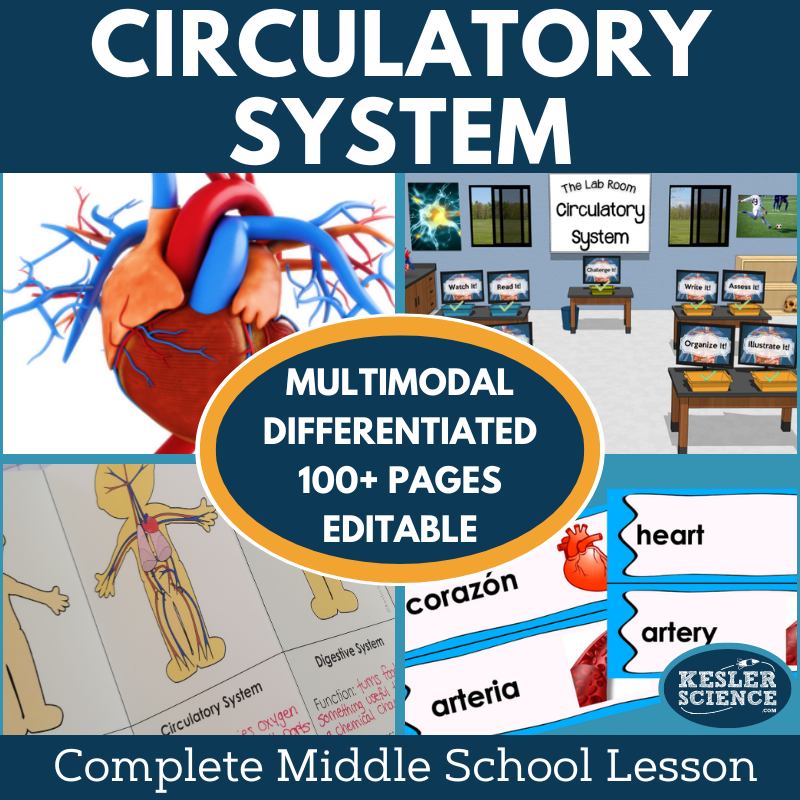



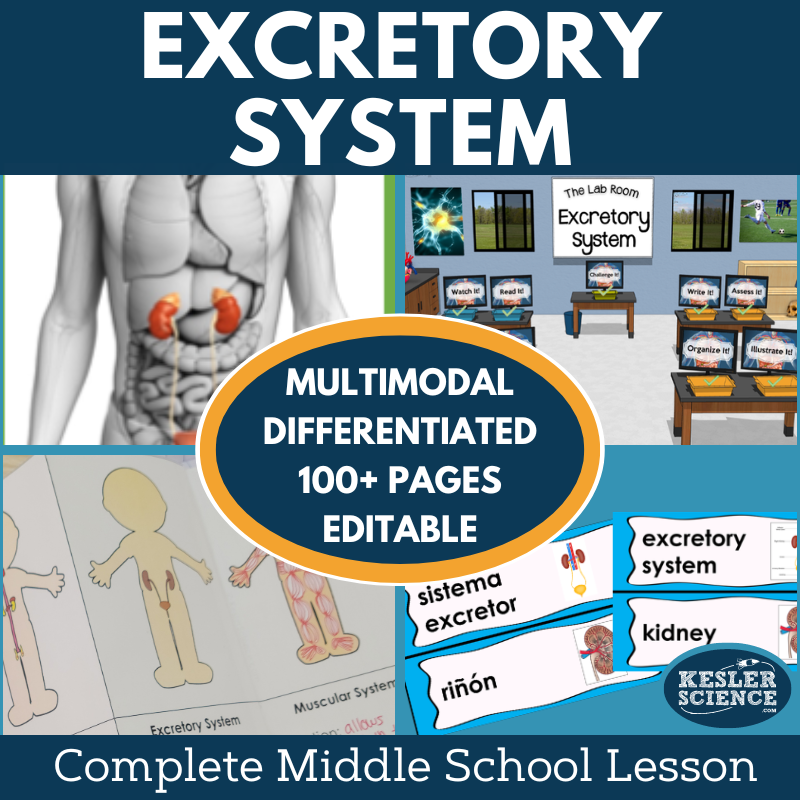

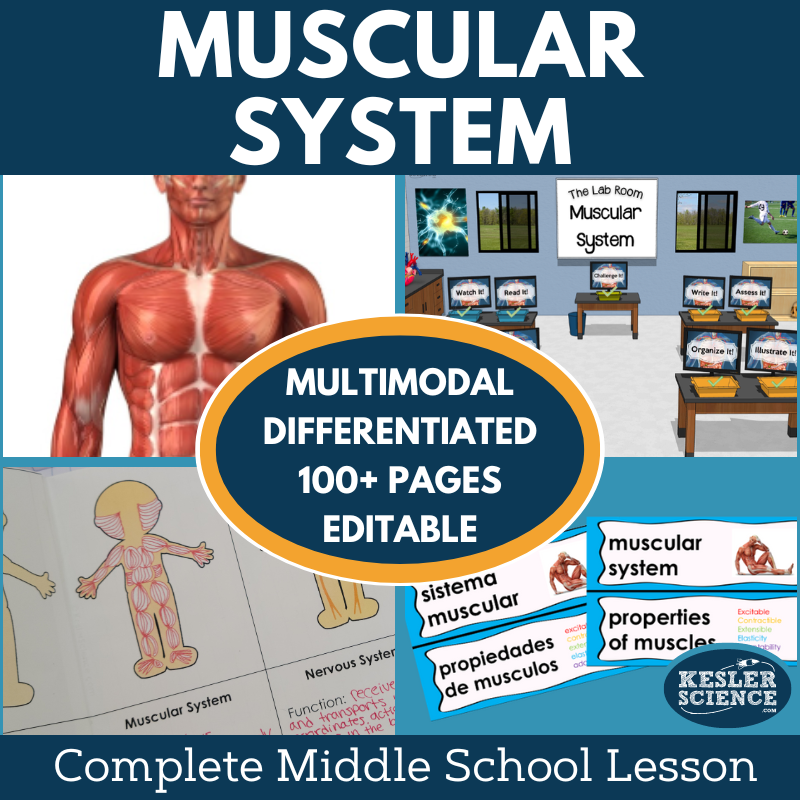

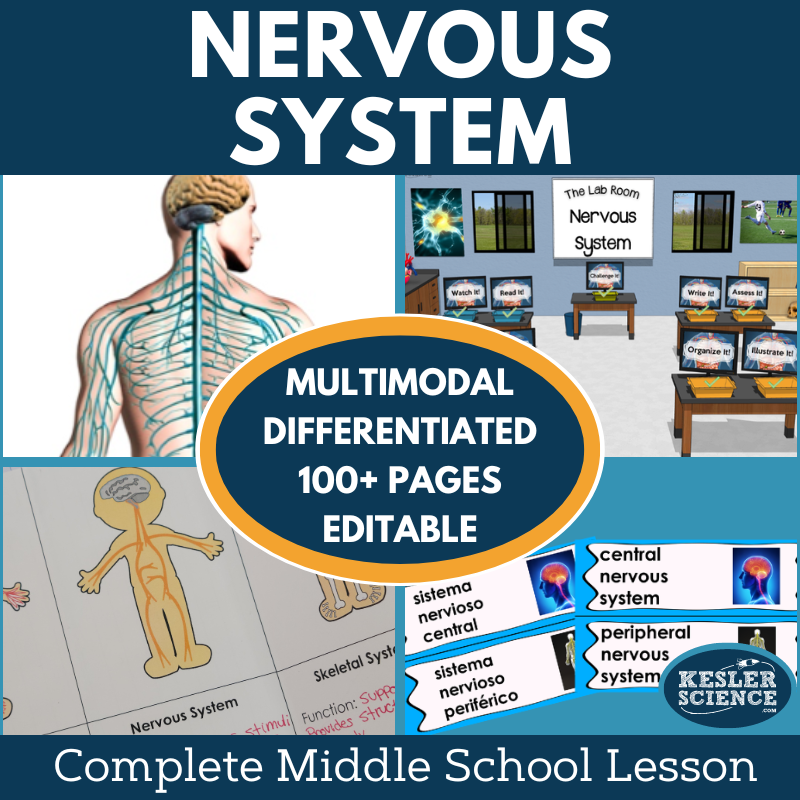



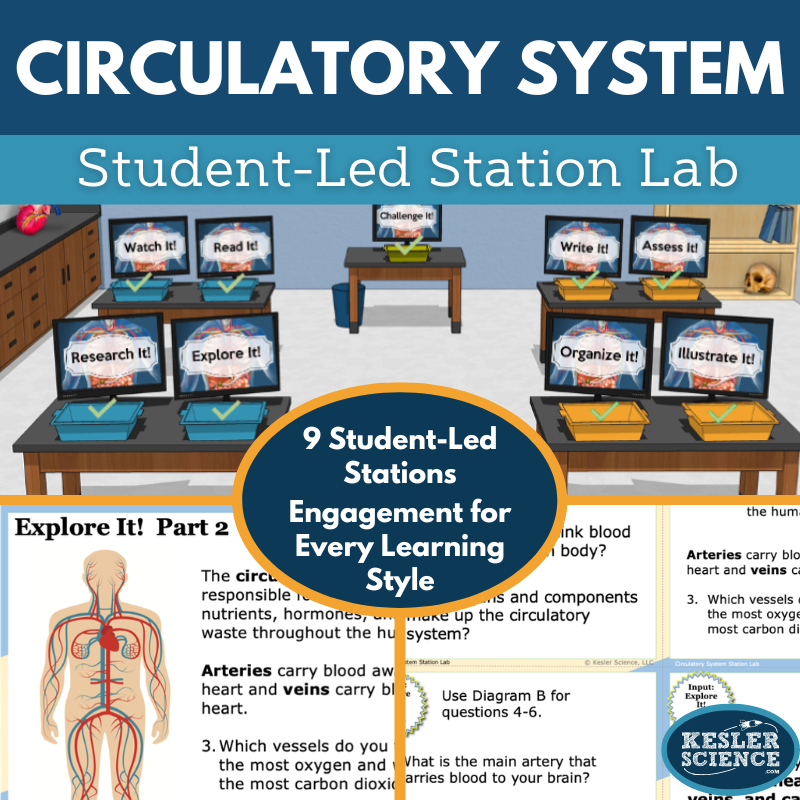

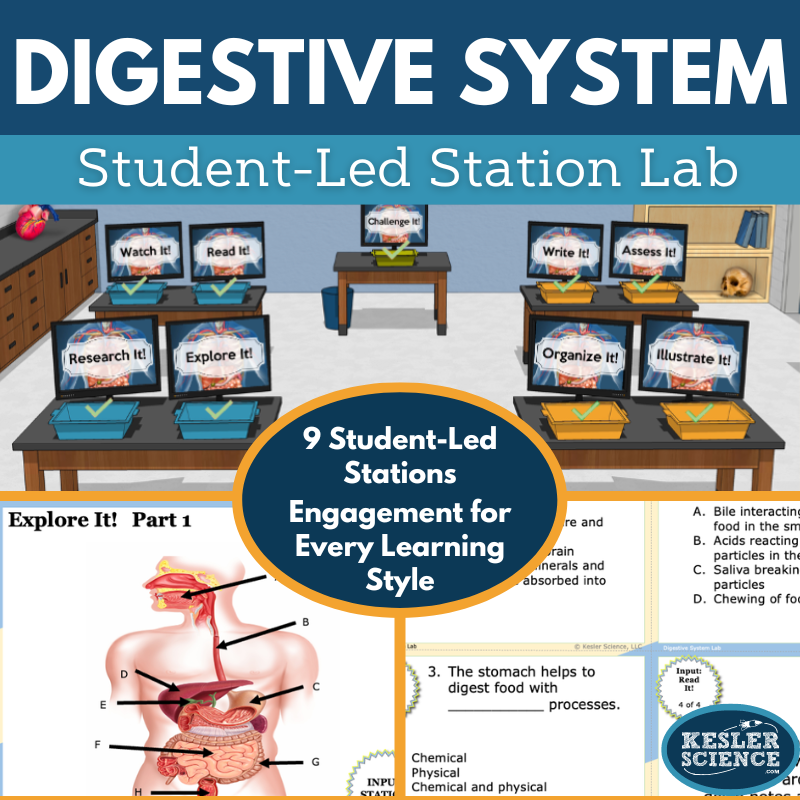

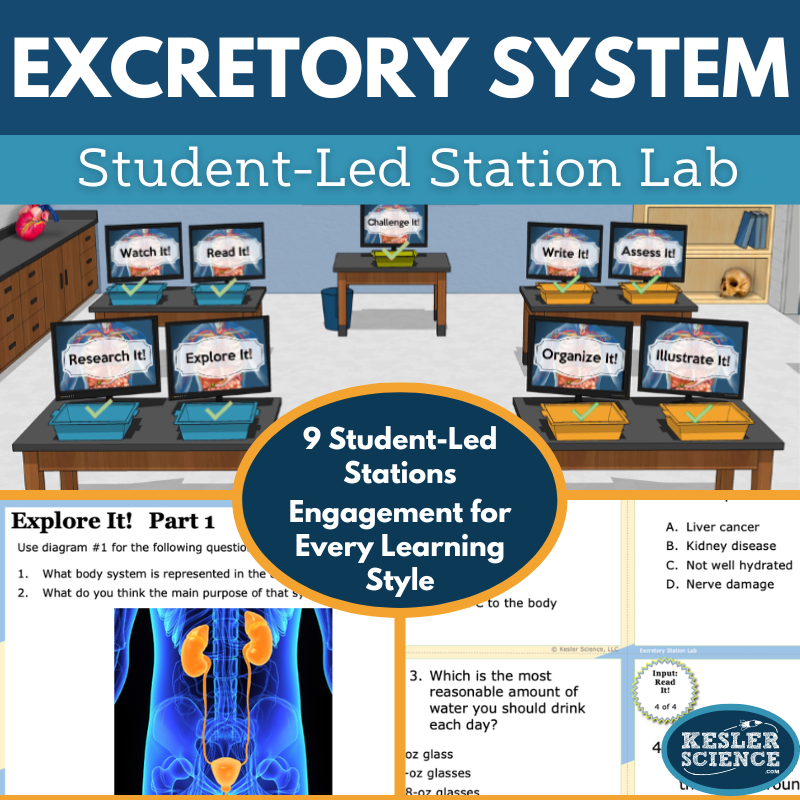

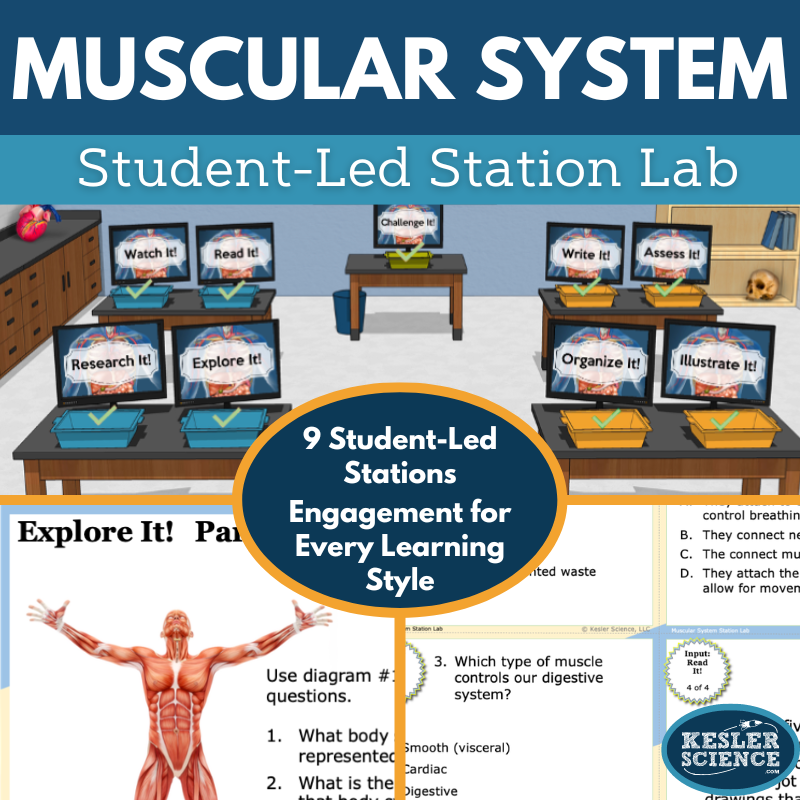

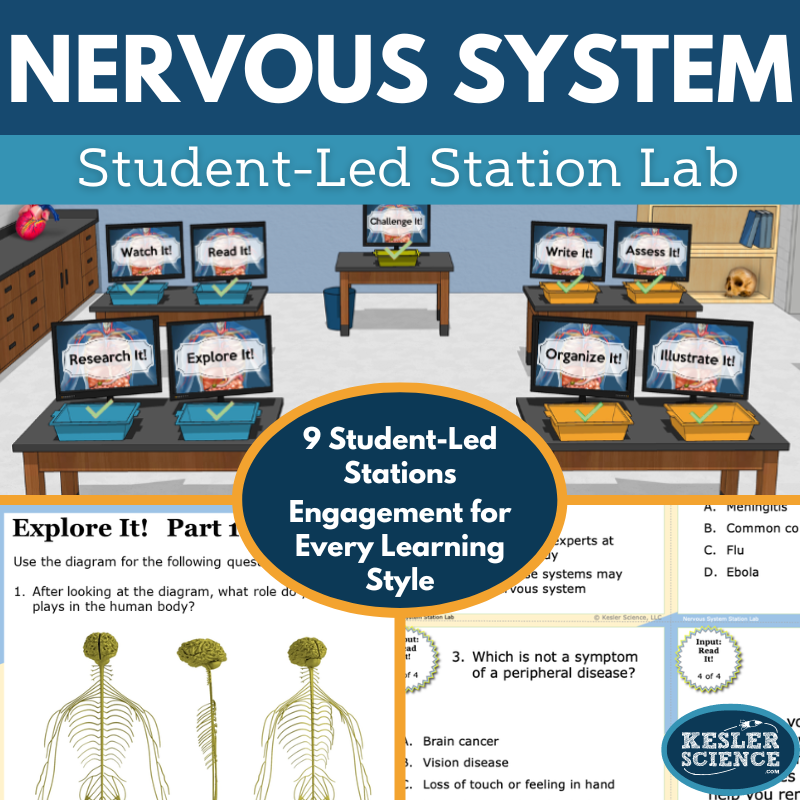

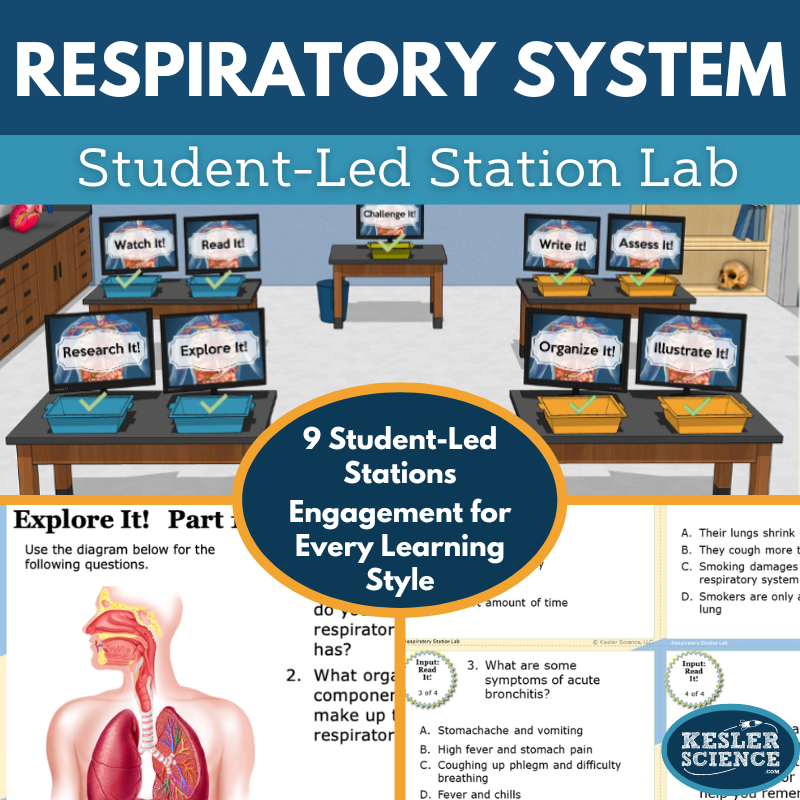

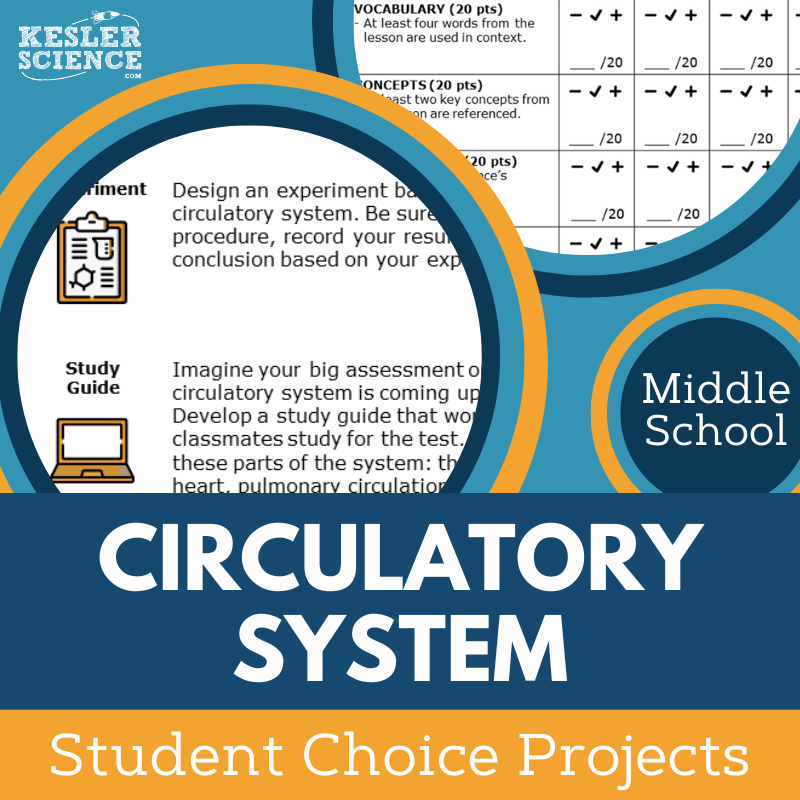

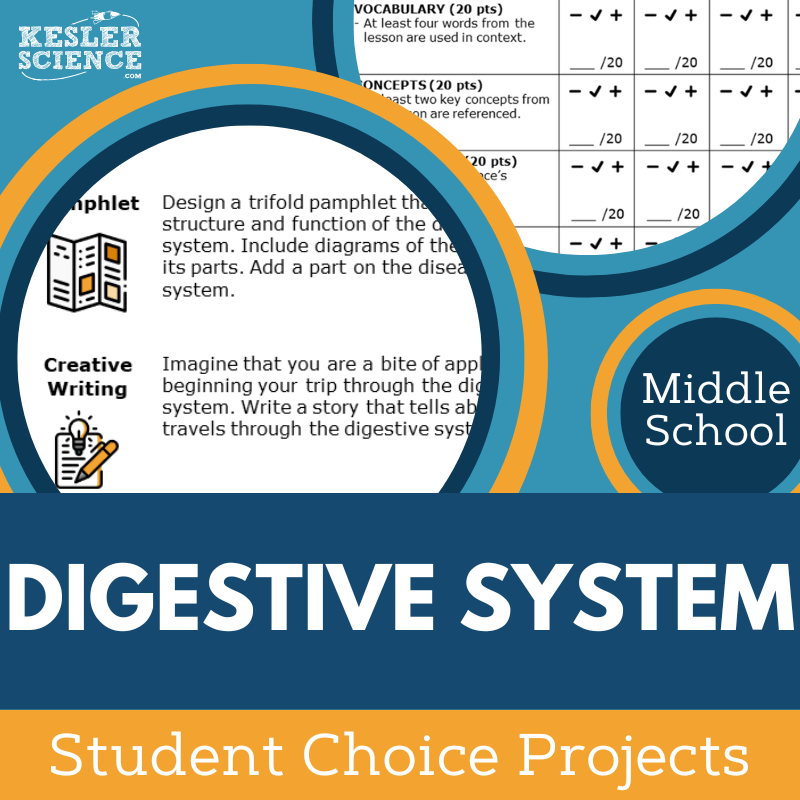

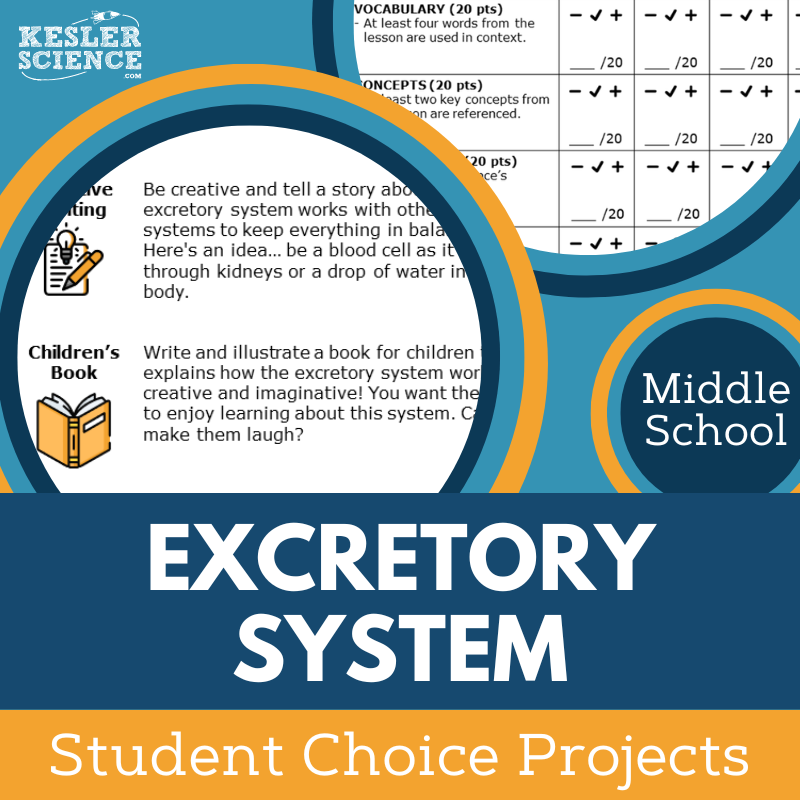

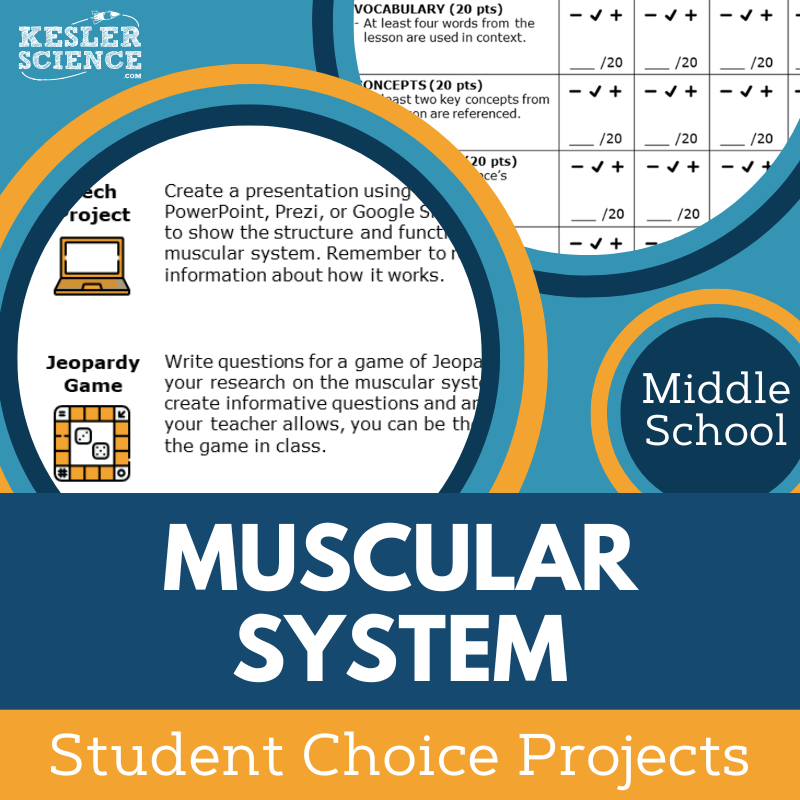

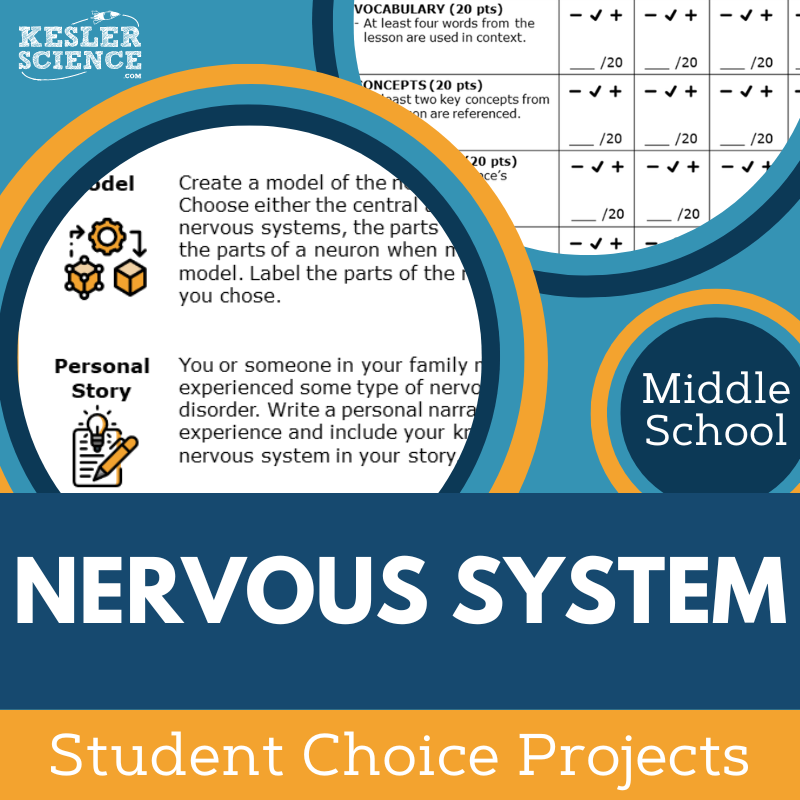

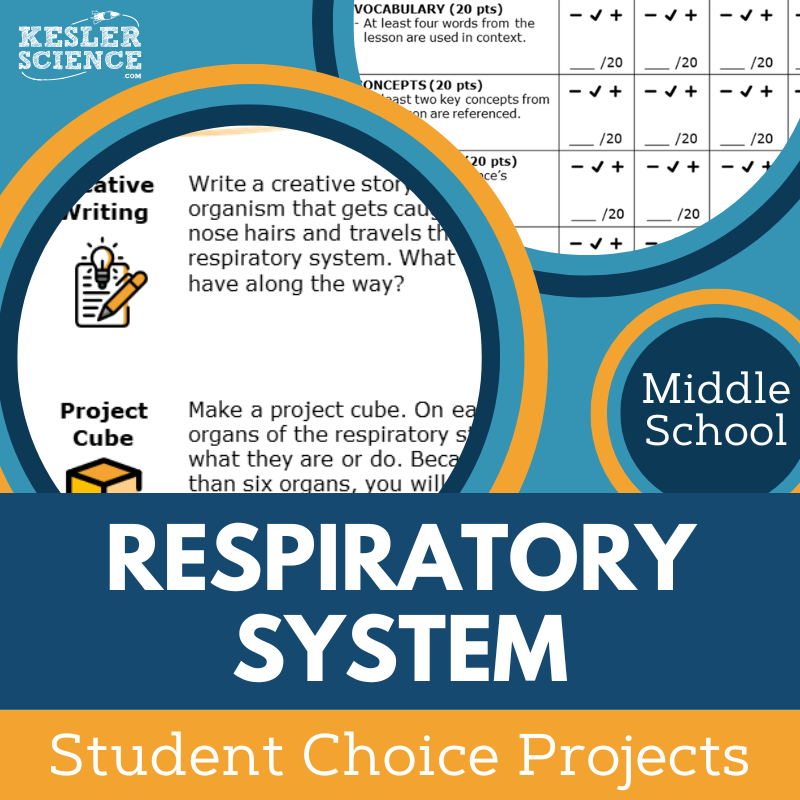



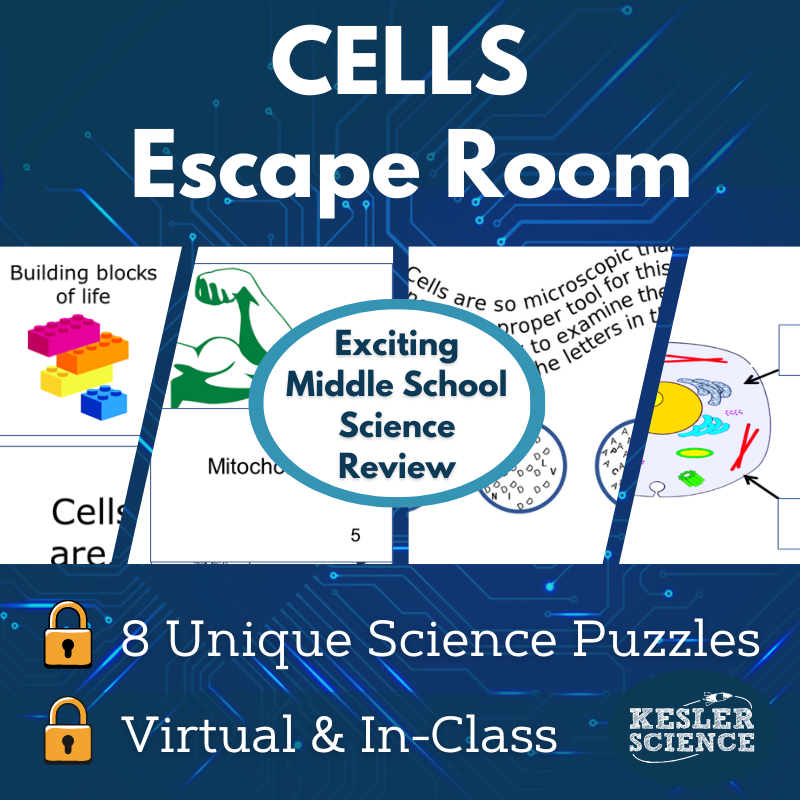

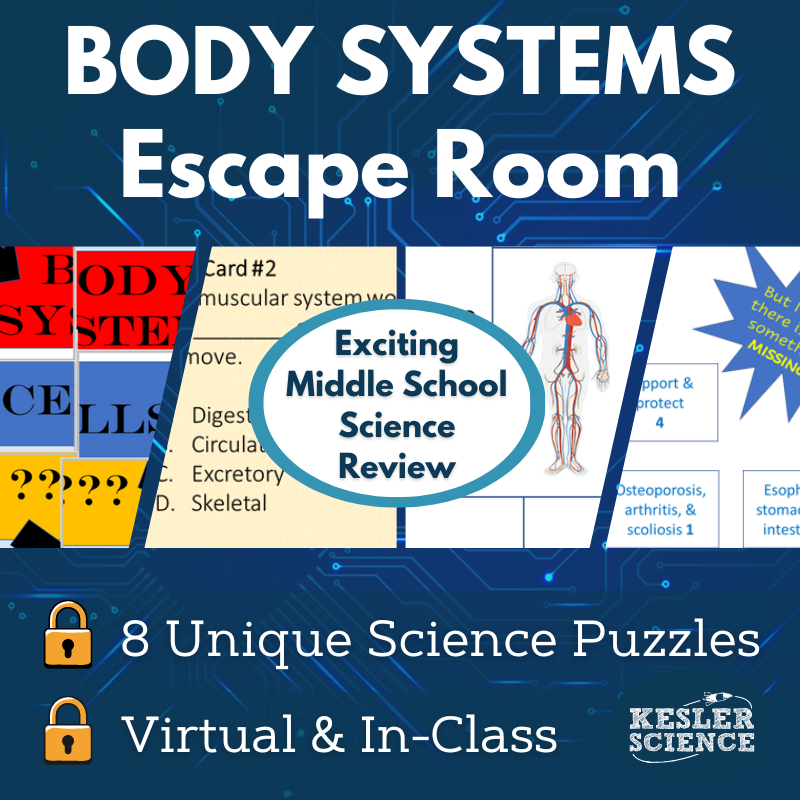

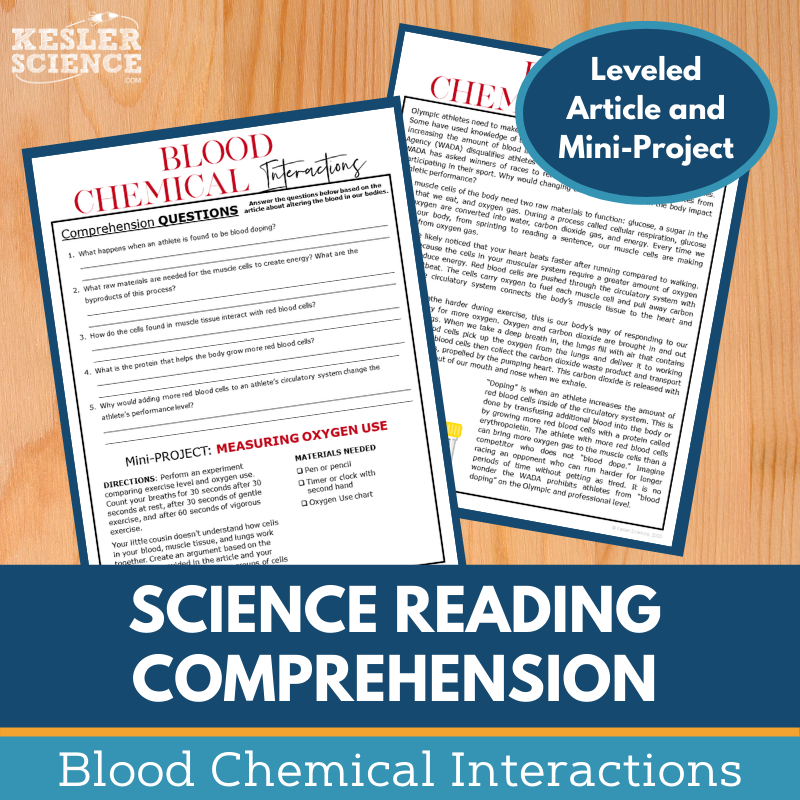

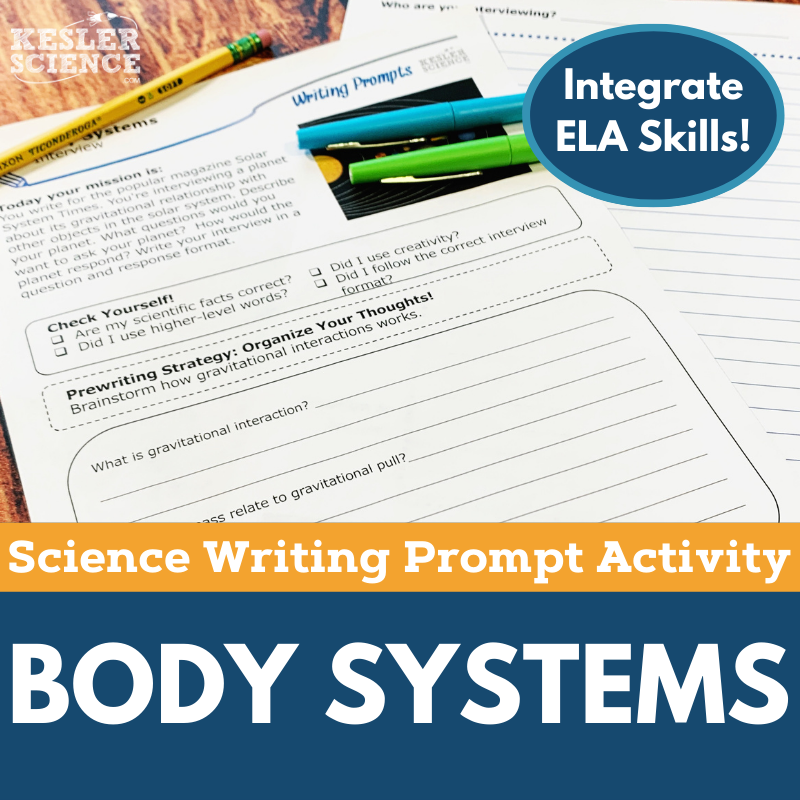

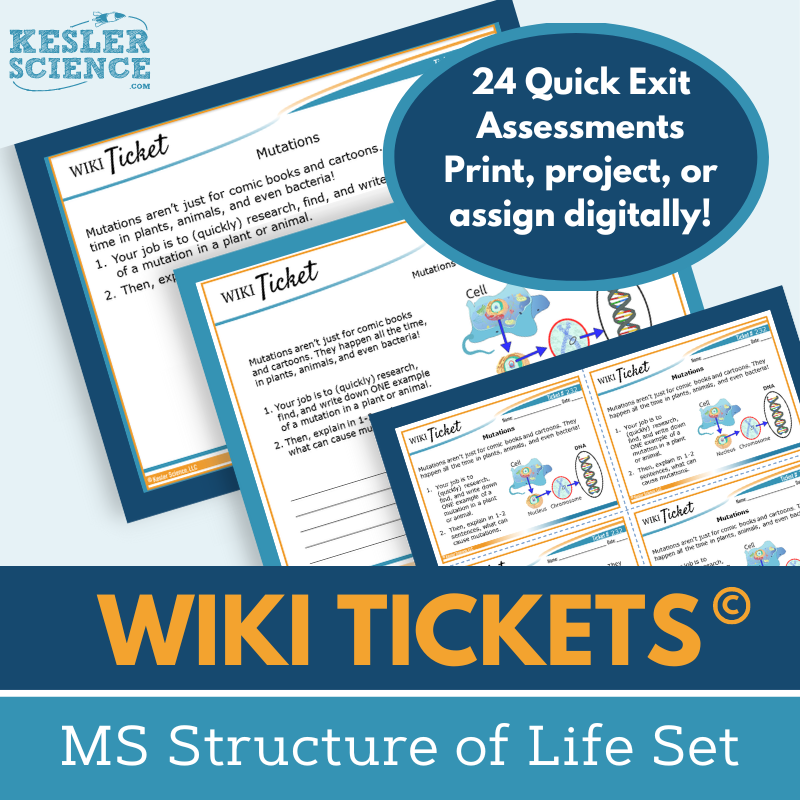

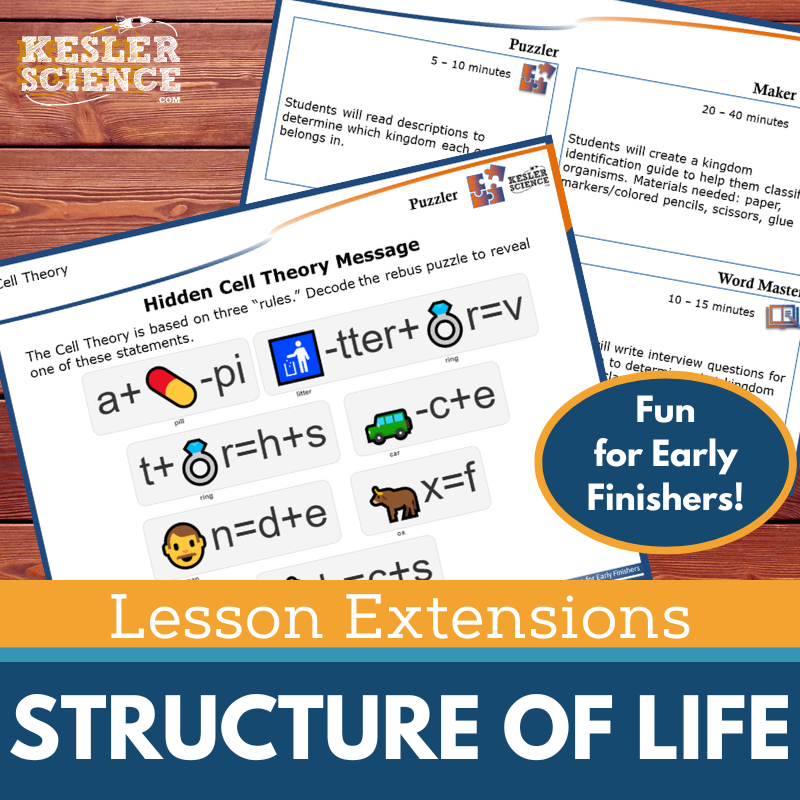

.png)
.png?width=200&height=200&name=Cover-Two-Point%20Test%20(2).png)
